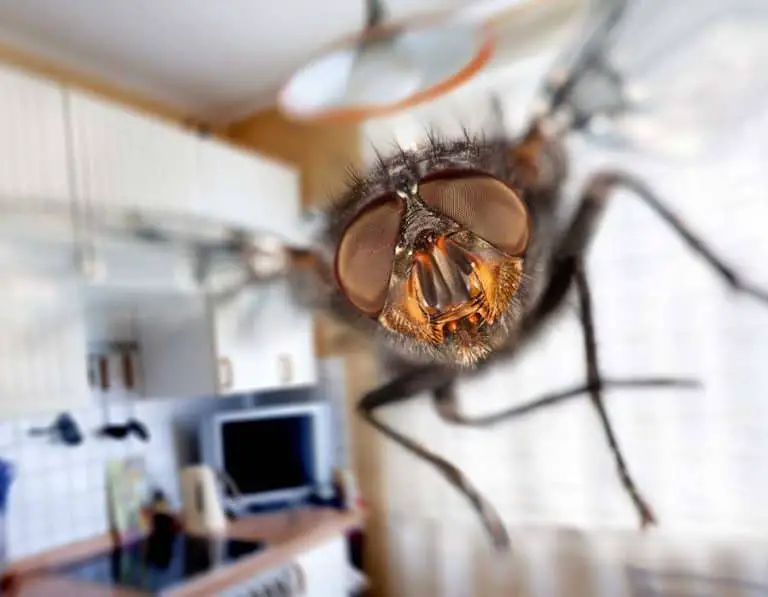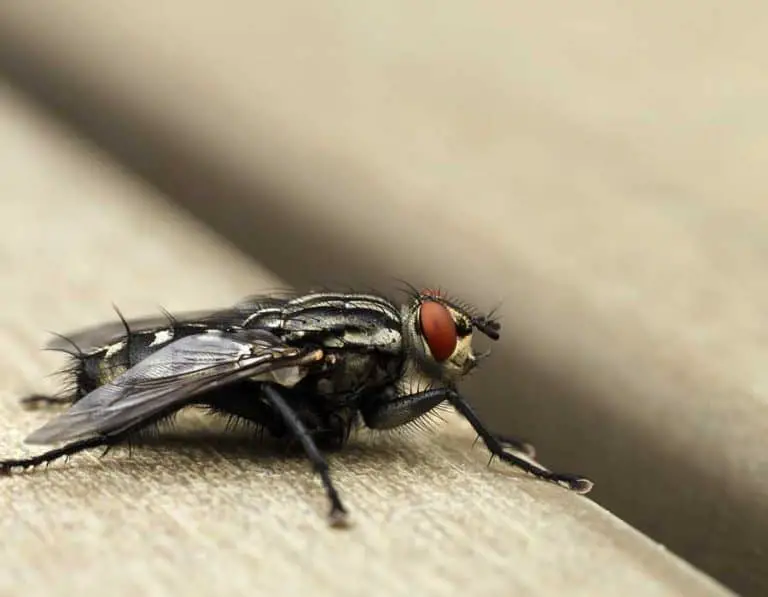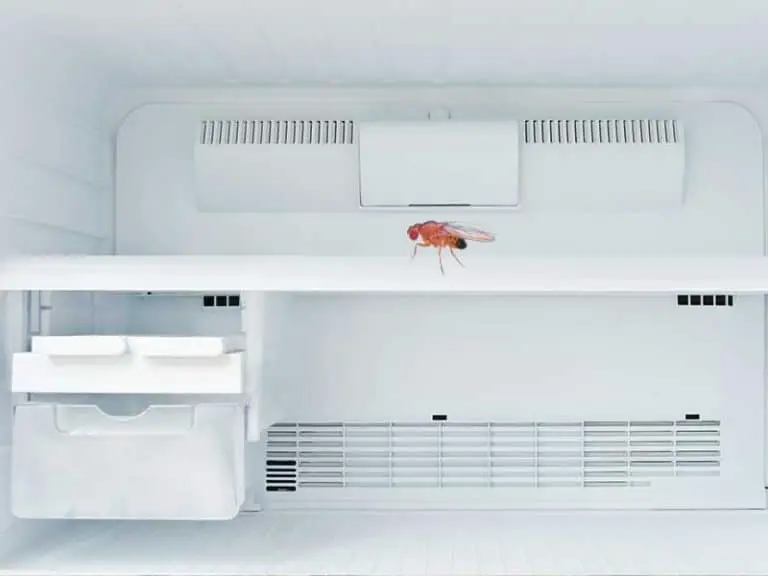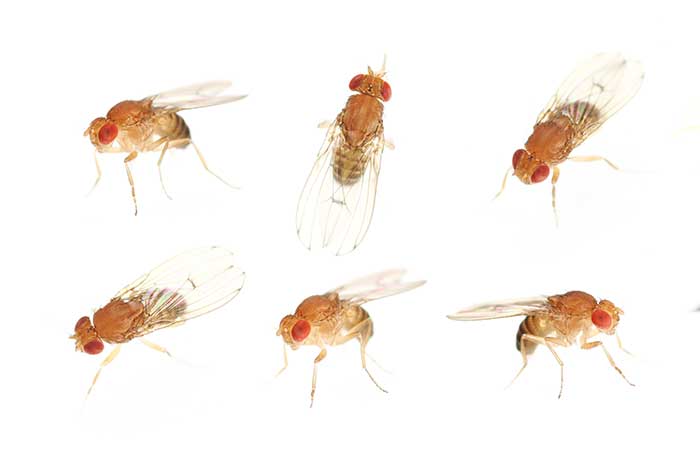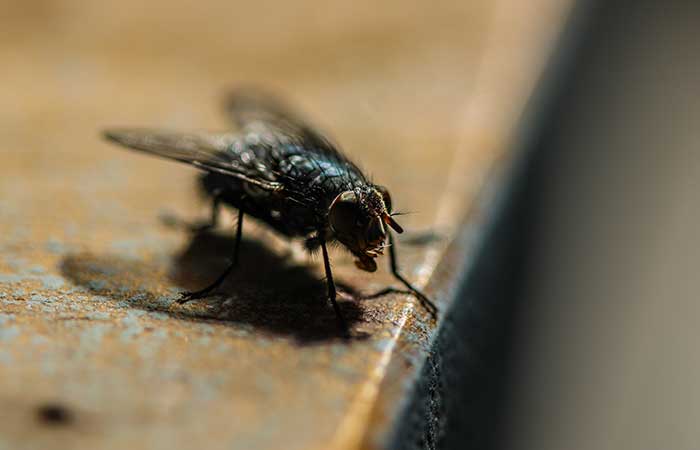Cluster Flies: How to Identify & Get Rid of Them
Cluster flies are some of the most common flies in the house. These flies are very common in the fall. Flies of this genus make their way indoors to escape the colder outdoor temperature.
The good news is cluster flies have no impact on human health. They don’t bite and they don’t eat food humans do. Cluster flies don’t even lay eggs in the food.
Cluster flies are small insects that feed on pollen. They live outside and only move indoors when the weather gets cold. Seen in small clusters in attics and basements, cluster flies can be eliminated by sealing all entry points or by vacuuming.
These flies are harmless but they can still be annoying. Cluster flies get their name from their habit of flying in clusters, especially indoors.
Getting rid of cluster flies is only possible by sealing all possible entry points. These flies aren’t deterred by a clean home or a home that has no food for them to eat.
What are cluster flies?
Cluster flies are part of the Pollenia group of flies. These flies feed on flower nectar, similar to bees. Cluster flies don’t eat decaying organic matter, garbage, or other types of food the Common house fly eats.
What do cluster flies look like?
Cluster flies have a grey to black body that grows between 8 and 15mm. These flies have transparent overlapping wings and can fly or crawl.
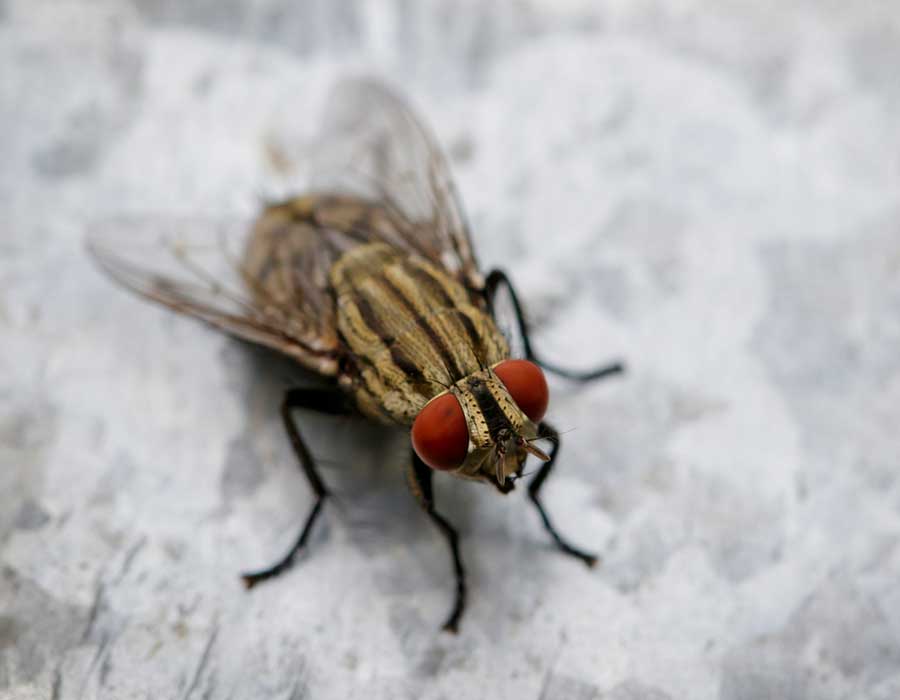
Cluster flies are similar to Common house flies but they have black and silver coloring on the abdomen. You can identify cluster flies further by their numbers. Typical flies in the house live solitary lives while cluster flies are always seen in groups very close to each other.
How big are cluster flies?
Cluster flies have different sizes depending on their lifecycle and the abundance of food. Most cluster flies have an average size of 8mm but they can grow almost twice this size in certain conditions.
Cluster flies are larger than the common house fly. Apart from their size, cluster flies are identified by their social behavior as they fly and rest in groups.
What do cluster flies eat?
Adult cluster flies feed on flower nectar. They visit multiple flowers per day to collect nectar. They also drink plant sap from leaves.
The larvae of cluster flies are carnivorous. Adult flies lay eggs in the ground on earthworms. Once the eggs turn to larvae earthworms become their immediate food source.
How to get rid of cluster flies
Eliminating cluster flies requires taking preventive measures to keep them out of the house as well as factual measures to eliminate them once inside of the house.
Add window mesh screens
Physical barriers work best against cluster flies. Installing window mesh screens is recommended when it comes to keeping these flies out.
Mesh screens need to be installed on all windows of the house as cluster flies can fly through any of them. This includes a small basement and attic windows. Cluster flies prefer attics as there are warm spaces where people rarely bother them and where they can overwinter.
Warmth is the main reason for cluster flies to find themselves inside the house. This is why sealing up all access points and preventing them from flying through the windows is recommended.
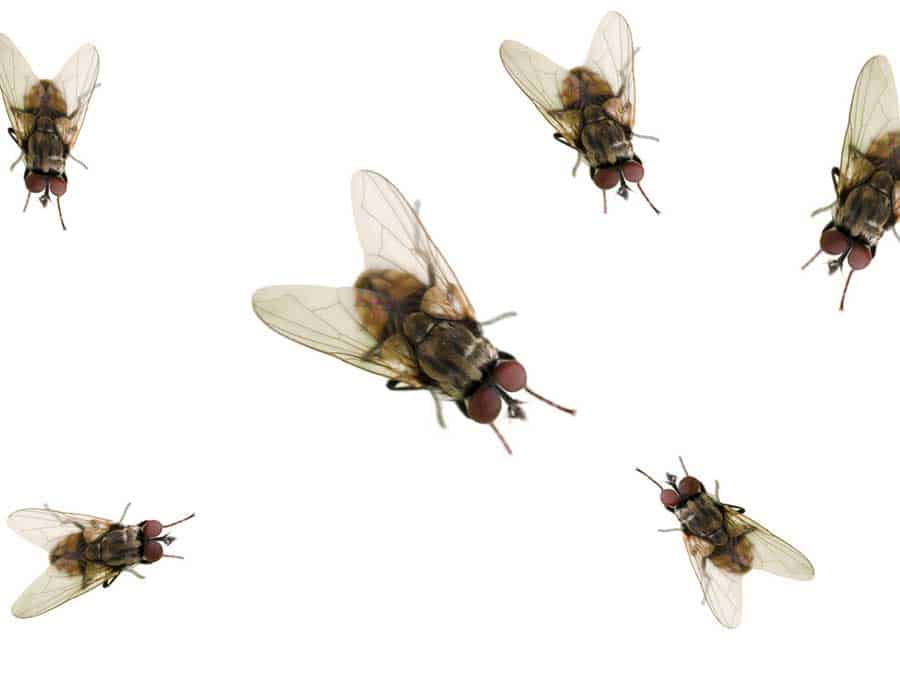
Exceptions aren’t recommended as cluster flies are attracted to light and warm air currents coming from the windows which means they don’t miss the chance of flying in regardless if they do it through a kitchen window or an attic window.
Since cluster flies move in groups there are higher chances of them doing it through windows. Window mesh screens might reduce natural light inside the house but they are necessary for the fall when these flies start looking for warm places to hide.
Seal all gaps (cluster flies can crawl)
Gaps in walls and around windows are often used by cluster flies to make their way inside of the house. They make the most of small openings that measure only 0.5 inches which means these flies can enter homes easier than most people think. As a result, it’s important to seal the space around the following.
- Windows
- Doors
- Piping
- Air conditioners
- Air vents
Crawling cluster flies are often overlooked as many people think they can only get in the house by flying. While most flies fly indoors, there are those that crawl.
Small and large openings are inviting passages for these flies to the house. Small cracks in the walls can sometimes be overlooked by homeowners. But even large openings such as chimneys can be a highway to the house for cluster flies.
Air conditioners connected to an outside unit or piping that isn’t properly sealed are common places cluster flies crawl through. These spaces can be filled with silicone or silicone-latex caulk to keep cluster flies and other insects out.
Other areas with small openings such as gaps under doors also need to be properly sealed. You can check these spaces by seeing if there’s a draft as this indicates small gaps flies can consider to either crawl through or fly through to get indoors.
Install bug zappers
Bug zappers are some of the most efficient tools against cluster flies and all other flies that can be found inside the house. You need to install these bug zappers outside as this is where flies come from and this is where the zapping noise isn’t too bothersome.
Bug zappers can be installed outdoors in key areas where there’s open soil for cluster flies to lay eggs such as the space next to the foundation where you plant flowers.
Cluster flies always lay eggs in the ground and they do so in open ground as well as on the lawn and in other places where they can find earthworms for their emerging larvae to feed on.
Installing bug zappers in areas cluster flies are likely to lay eggs is one of the proven methods of eliminating the risk of a rapid home invasion.
Vacuum the attic
Frequently vacuuming the attic is one of the proven methods against cluster flies. These flies are primarily interested in moving into the attic as home residents rarely disturb them here.
They stand together in corners, along walls, or on the floor. These flies are trying to escape cold weather and they are always found in the warmest areas of the attic. As a result, vacuum these areas will clear cluster flies from the house.
Use insecticide in the fall
Spraying insecticide on the outer perimeter of the house is recommended against cluster flies, especially in the fall when they seek out indoor warm spaces.
Insecticides are dangerous but they work when applied properly by a professional. The best part about using insecticides around the house is they keep a wide range of insects and bugs away. All bugs interested in making it indoors can be deterred by using various commercial insecticides.
Use aerosol sprayers
Aerosol dispensers can be effective in small areas such as a room, an attic, or the basement. These automatic dispensers use batteries to spray aerosols frequently through the day and the night.
Aerosol clusters flies hate include essential oils or aromas that mimic lavender essential oil or eucalyptus essential oil. Aerosol spray dispensers can deter other flies together with cluster flies. They can keep Common house flies away as well.
Spray yard bug spray
One of the best methods of eliminating cluster flies from the house is to take preventive measures outdoors. These flies need to lay eggs in the ground where cluster fly larvae feed on earthworms. As a result, spraying the right yard spray in the backyard, around the lawn, and in the garden can keep cluster flies away for good.
Bug spray needs to be sprayed in the closest perimeter to the house for it to be effective against cluster flies. You can start spraying the front lawn and move on to the backyard and further out into the garden if needed.
Bug spray is mixed with water and sprayed around the yard to keep flies from laying eggs. They cannot reproduce if they cannot lay eggs and they need to move along to a different area which means your home remains free of flies.
Bug spray or insect-repelling spray is best used on small surfaces so it’s best to limit its application to the ground closest to the house.
Summary
Cluster flies aren’t a direct threat to human health or animal health. They only feed on flower nectar and they’re only interested in indoor living when the weather is cold, starting with the fall.
Cluster flies can overwinter in homes where they become less active until spring arrives. These flies are active in the warm months when they lay eggs in the ground around the house. These eggs go through different lifecycle stages. Their nymph stage requires earthworms to feed on.
Cluster flies always lay eggs in the ground which means they don’t need to be indoors during the summer. Keeping them away involves sealing up all entry points, adding mesh window screens, and vacuuming them as soon as they make it indoors to prevent them from seeking shelter in the house.

